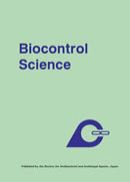Volume 4, Issue 2
Displaying 1-10 of 10 articles from this issue
- |<
- <
- 1
- >
- >|
-
1999Volume 4Issue 2 Pages 59-65
Published: September 20, 1999
Released on J-STAGE: June 28, 2010
Download PDF (967K) -
1999Volume 4Issue 2 Pages 67-73
Published: September 20, 1999
Released on J-STAGE: June 28, 2010
Download PDF (2199K) -
1999Volume 4Issue 2 Pages 75-81
Published: September 20, 1999
Released on J-STAGE: February 23, 2011
Download PDF (1048K) -
1999Volume 4Issue 2 Pages 83-86
Published: September 20, 1999
Released on J-STAGE: June 28, 2010
Download PDF (619K) -
1999Volume 4Issue 2 Pages 87-90
Published: September 20, 1999
Released on J-STAGE: June 28, 2010
Download PDF (2861K) -
1999Volume 4Issue 2 Pages 91-95
Published: September 20, 1999
Released on J-STAGE: June 28, 2010
Download PDF (4051K) -
1999Volume 4Issue 2 Pages 97-100
Published: September 20, 1999
Released on J-STAGE: June 28, 2010
Download PDF (480K) -
1999Volume 4Issue 2 Pages 101-104
Published: September 20, 1999
Released on J-STAGE: June 28, 2010
Download PDF (614K) -
1999Volume 4Issue 2 Pages 105-108
Published: September 20, 1999
Released on J-STAGE: June 28, 2010
Download PDF (590K) -
1999Volume 4Issue 2 Pages 109-113
Published: September 20, 1999
Released on J-STAGE: June 28, 2010
Download PDF (668K)
- |<
- <
- 1
- >
- >|
